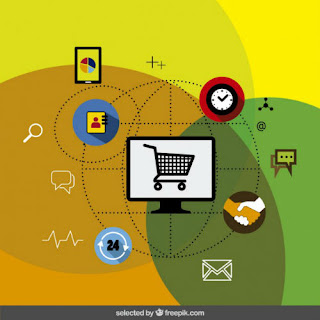In today’s hyper-competitive world, success is measured by how customers experience your brand online. The brands who can gauge and address, or even exceed customer expectations are ones who will be stay ahead in the rat race. Being able to actively engage customers online and on their smart devices has become a must have for businesses. Those retailers who stick to the conventional eCommerce model will lost out – both in terms of customers and revenue.
In such a scenario, what can you do to help your brand remain competitive? Here are three eCommerce trends that you can bank on to improve conversion rates.
Personalization involves addressing someone by name and remembering their site preferences (provided they are members or registered users). A number of online retailers use this technique to keep shoppers hooked. While this is a great technique, we can expect to see context replacing personalization during the course of this year.
In a context-focused site experience, a user doesn't need to be logged on or registered with a site in order to receive targeted content or information that can help them in their purchase decision. This is because, due to due to the latest consumer-centric technology, brands are able to virtually map customer journeys and anticipate needs in advance. By doing so, they can provide buyers with the information they require, streamlining the online buying experience further.
2. Brands to actively pursue buyers:
Online buying can be a relatively flat and impersonal experience. As opposed to a physical buying experience where you walk into a store and are (at times) greeted by name, the world of online retail can make you feel like a stranger. When you enter a web store, there's no one to welcome you, to guide you when you have a question about a size or color, or come to your assistance when you face a problem (like a discount code) not working. Most buyers only engage with a real person post their sale and that too if something has gone wrong. Consequently, the online conversion rates are lower than their in-store counterparts.
In 2016, we expect brands to proactively engage shoppers instead of waiting for the initial contact. Shoppers will be actively pursued throughout their buying journeys and on their product pages. Retailers and marketers take help of ecommerce development companies to improve online stores. In addition, they can drive up their conversion rates by providing live chat, providing immediate help in case a customer faces any issue and displaying relevant information on specific product pages.
3. Mobile engagement and mobile commerce to continue growing:
In 2016, we expect brands to proactively engage shoppers instead of waiting for the initial contact. Shoppers will be actively pursued throughout their buying journeys and on their product pages. Retailers and marketers take help of ecommerce development companies to improve online stores. In addition, they can drive up their conversion rates by providing live chat, providing immediate help in case a customer faces any issue and displaying relevant information on specific product pages.
3. Mobile engagement and mobile commerce to continue growing:
According to Gartner, “By 2017, U.S. customers’ mobile engagement behavior will drive mobile commerce revenue in the US to 50% of North America’s digital commerce revenue.” If a brand doesn't make the necessary effort to interact with or reach its target buyers via phones and tablets, they are not reaching almost 50% of them. Helping customers in getting things done via smartphones is imperative to a retailer's success.
Ultimately, the trends listed above highlight how significant it is to have an omnichannel eCommerce strategy. As the line between physical and online stores continues to blur, the aim of retailers in 2016 should be to ensure that their customers have a hassle free and pleasurable buying journey over multiple channels.
Ultimately, the trends listed above highlight how significant it is to have an omnichannel eCommerce strategy. As the line between physical and online stores continues to blur, the aim of retailers in 2016 should be to ensure that their customers have a hassle free and pleasurable buying journey over multiple channels.






